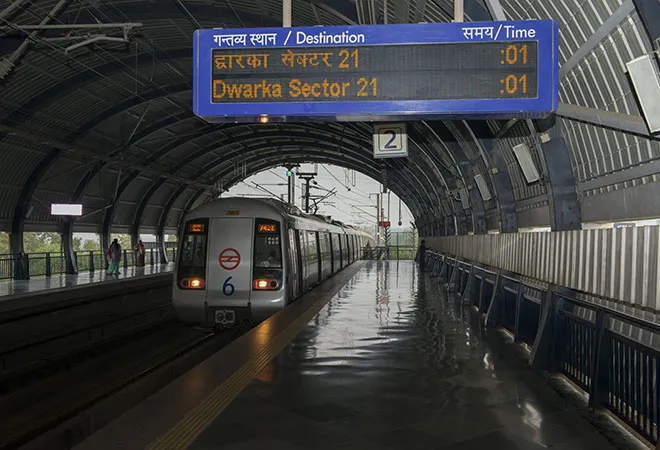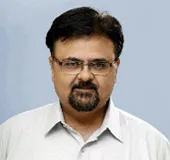
This piece is part of the series, Governance Propositions of 2022
With many new projects launched, existing lines expanded or upgraded, a handful being commissioned, and Detailed Project Reports (DPRs) being prepared for several others, metro rail development marked India’s urban landscape in 2021. While the metro craze that has swept the cities offers a comfortable and reliable city transport option, looking at it as a panacea for India’s urban mobility woes is an incorrect assumption.
After decades of unplanned urbanisation leading to sub-standard quality of life for millions of city dwellers, the nation first woke up to the dire need for planned mass transport in 2006. The National Urban Transport Policy (NUTP) emphasised the development of public transportation. For all million-plus cities, NUTP recommended the preparation of comprehensive mobility plans (CMP) and the establishment of the Unified Metropolitan Transport Authority. These mandates were reinforced as preconditions for cities to become eligible for central grants under the Jawaharlal Nehru National Urban Renewal Mission (JnNURM). JnNURM also mandated the adoption of the largely-unsuccessful Bus Rapid Transit Systems (BRTS), amongst others, as a targeted move for improving urban public transport.
Ever since the NDA government assumed power in 2014, the JnNURM and even the BRTS were given a silent burial. Public transport remained at the centre of urban mobility, but with a sweeping shift toward the metro rail. Following Delhi's success and the race for its emulation by several cities, the Union Cabinet cleared the Metro Rail Policy in August 2017. Ever since, not just large metropolitan areas but even the smaller Tier 1 and 2 cities have witnessed a slew of mega metro projects being rolled out, most of which are under various stages of development, with a handful being commissioned. The laggard response of states and cities for the CMP and UMTA was exposed 11 years after the NUTP, as the metro policy reiterated both as a precondition for states to access central assistance for metro development.
While the metro craze that has swept the cities offers a comfortable and reliable city transport option, looking at it as a panacea for India’s urban mobility woes is an incorrect assumption.
The lack of such essential planning has meant that none of the previous policies or schemes has benefited the people. Its absence has led to the adoption of metro rail as a preferred means of mass transport haphazardly, without most cities even evaluating its need. The addition of a newer mass mode transit in the absence of UMTA will only further disintegrate urban mobility.
Global cities that offer successful public transport have primarily relied on an integrated approach to all modal options through the lens of last-mile connectivity, a critical determinant for the large-scale adoption of any mass public transport mode by the masses. Cities known for their successful multimodal public transport services, such as New York, London, Singapore, Hong Kong, etc., all have an overarching and empowered body to take a holistic view of all the transit options that these cities offer. Such cities have common ticketing for all transport modes facilitating seamless access to buses, metros, light rail, and even ferries—during a single trip. They also factor in paratransit options such as autorickshaws and, importantly, pedestrian needs, including those of the differently abled. Each of these is developed and designed keeping in mind their interconnectivity.
Such an integrated approach has meant that public transport has captured the highest modal share of mobility in most of these cities. In London, for example, an average day share for active, efficient, and sustainable modes including walking, cycling, and public transport was 62.7 percent in 2017. In Singapore, too, the modal share of the peak hour public transport stands at 67 percent. India’s fragmented approach without giving any thought to comfort and reliability has meant that the modal share of public transport has remained low. While the numbers may have changed over the past decade, the most reliable data from Census 2011 indicate that only 18 percent of people prefer public transport for their daily work trips. On the other hand, more recent studies have indicated that the overall modal share of public transport is likely to drop to 44.7 percent in 2030-31 from 75.5 percent in 2000-01. With the impact of COVID-19 weaning away people from shared transport to private vehicles, such a forecast may not be unreal. As cities expand and necessitate daily work commutes over longer distances, the lack of an integrated approach to public transport will increase this imbalance.
The lack of such essential planning has meant that none of the previous policies or schemes has benefited the people. Its absence has led to the adoption of metro rail as a preferred means of mass transport haphazardly, without most cities even evaluating its need.
Sadly, even after being iterated in successive policies, most states have opted to give lip service to the CMP’s preparation, let alone establish an empowered UMTA. The metro policy is also likely to go down the JnNURM way—in a rush to receive central grants, states cooked up the necessary service benchmarks without implementing most of the mandated governance and systemic reforms.
While the NUTP recommended the creation of UMTA in 2006, only a handful of cities, including Bhopal, Hyderabad, Jaipur, Kochi, Lucknow, Tiruchirappalli, and Vijayawada, had made any decisive move towards its establishment. However, Mumbai and Delhi’s experience with UMTA explains the approach towards such central mandates.
The government of Maharashtra established UMTA under the aegis of the MMRDA through a Government Resolution (GR) in 2008, specifying the composition of a ‘Main Committee’ chaired by the Chief Secretary and the formation of sub-committees. Two years later, the government issued another GR composing a ‘Core Committee’ “to assist the Main Committee”. Mumbai’s UMTA has merely fulfilled a national mandate without any statutory and empowered status. Similarly, the Delhi Integrated Multi-Modal Transit System (DIMTS) formed in 2006 has suffered from the same callousness and is limited to covering the city’s cluster bus operations introduced in 2010 without having any say over the much larger operations of the Delhi Transport Corporation. More recently, Hyderabad's experience with UMTA, too, represents a case of a toothless body set up with a multitude of member government departments and parastatals, leading to conflicting objectives and turf wars.
The Ministry of Housing and Urban Affairs (MoHUA), which is spearheading India’s metro development, has predicted that up to 2031, ramping up and creating new public transport infrastructure in cities will need an investment of INR 39,20,000 crore (US $600 billion). It has an estimated 44 percent allocation for road building; only 11.5 percent for investments into public transport. Such mega investment in roads without a commensurate infusion of funds in public transport will be disastrous and pave the way for more personal vehicles. Besides a comprehensive metro plan for the metropolitan region, cities like Mumbai are also exploring means to exploit waterways for public transport. While the ROPAX ferry service between Mumbai and Mandwa is already operational, plans to connect the cities of Mumbai, Thane, and Navi Mumbai with water taxis are at advanced stages of development.
These promises will deliver social benefits only when states adopt an integrated approach for their planning and execution. Preparation of CMPs with periodic re-evaluation as per future requirements would be a good start. But even before planning mega metro projects, cities and states need to identify the need for a “best fit” mode of transport. India needs to devote much of its efforts to set up UMTAs at the state and city levels to give its urban residents a better quality of life.
The views expressed above belong to the author(s). ORF research and analyses now available on Telegram! Click here to access our curated content — blogs, longforms and interviews.




 PREV
PREV


